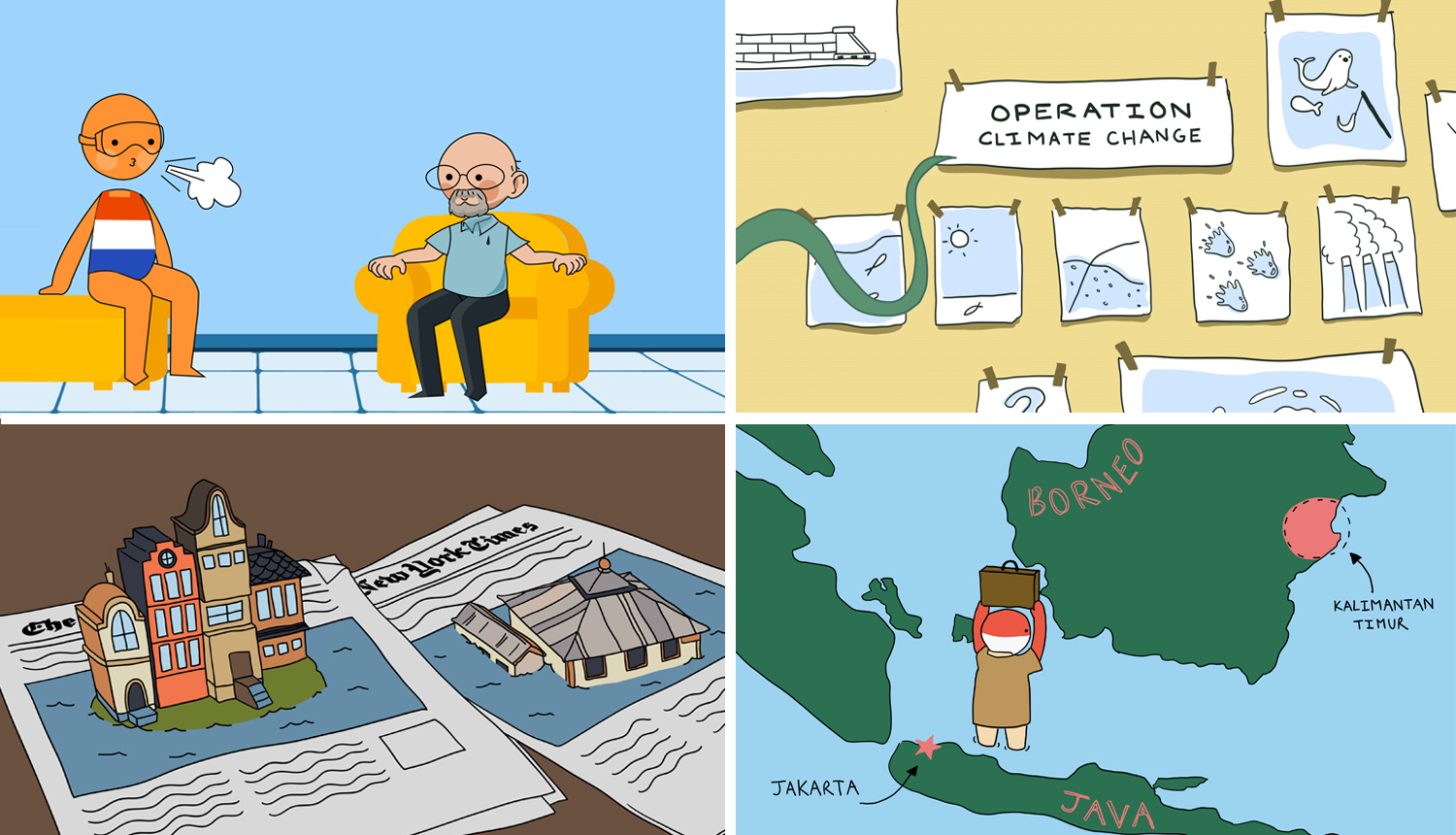Imagine a giant drained swimming pool. Now imagine one-quarter of the Netherlands inside that pool, as deep as 22 feet below sea level at its lowest points. Massive storm surge barriers, dikes, and 24/7 water pumps protect the country from flooding. However, with the intensification of climate change and the possibility of a sea-level rise of up to 16.4 feet by 2150, the Dutch may not be able to keep the swimming pool drained, says Simon Richter, Class of 1942 Endowed Term Professor of Germanic Studies in Penn’s School of Arts & Sciences.
To spread the word about this impending challenge, Richter—in partnership with Joshua Mosley, professor of fine arts at the Stuart Weitzman School of Design, and students—has created four animated videos over the past year-and-a-half that examine the potential effects of sea-level rise in the Netherlands and Jakarta.
The guide in the climate videos is Richter’s animated alter ego, Professor Poldergeist. The name is a comedic play on polders, low-lying tracts of land that form an artificial hydrological entity enclosed by dikes, and an angry ghost or poltergeist. Richter says his Professor Poldergeist is “animated by the spirit of the Dutch polder,” alluding to an old story about a man who became overconfident about his ability to prevent flooding in his community, lost his entire family, and became a ghost that haunts the area.
“There’s a lesson in that ghost story,” explains Richter. “The Netherlands is, you could say, haunted by the success of its technology. Higher dikes and more pumps have served them in the past, but they may not work for much longer.
“Once you add in an accelerated sea-level rise, the difference just grows to the point where it’s conceivable that within the next few decades or by the end of the century, the ability of the Dutch to keep pace with sea-level rise will be overwhelmed,” says Richter. The same is true and potentially happening much sooner in Indonesia’s capital city of Jakarta, home to more than 10.5 million people and the largest former Dutch colony in the world.
The mission of the Professor Poldergeist videos is to use animation, science, and a dose of humor to inform both the water sector and the public at large about the effect of accelerated sea-level rise on the Netherlands, and to contribute to public debate about how best to adapt there and elsewhere. The videos started as a collaboration with a team of three interns funded first by the Penn Undergraduate Research Mentoring Program, and later by the Sachs Program for Arts Innovation. The project has since been awarded a School of Arts & Sciences Making a Difference in Global Communities grant, given to support multidisciplinary projects working with students to address societal challenges internationally.
“Our animated videos are an example of how the arts and the sciences can come together to affect policy—and that’s really important and powerful,” says Richter.
This story is by Katelyn Silva. Read more at OMNIA.








